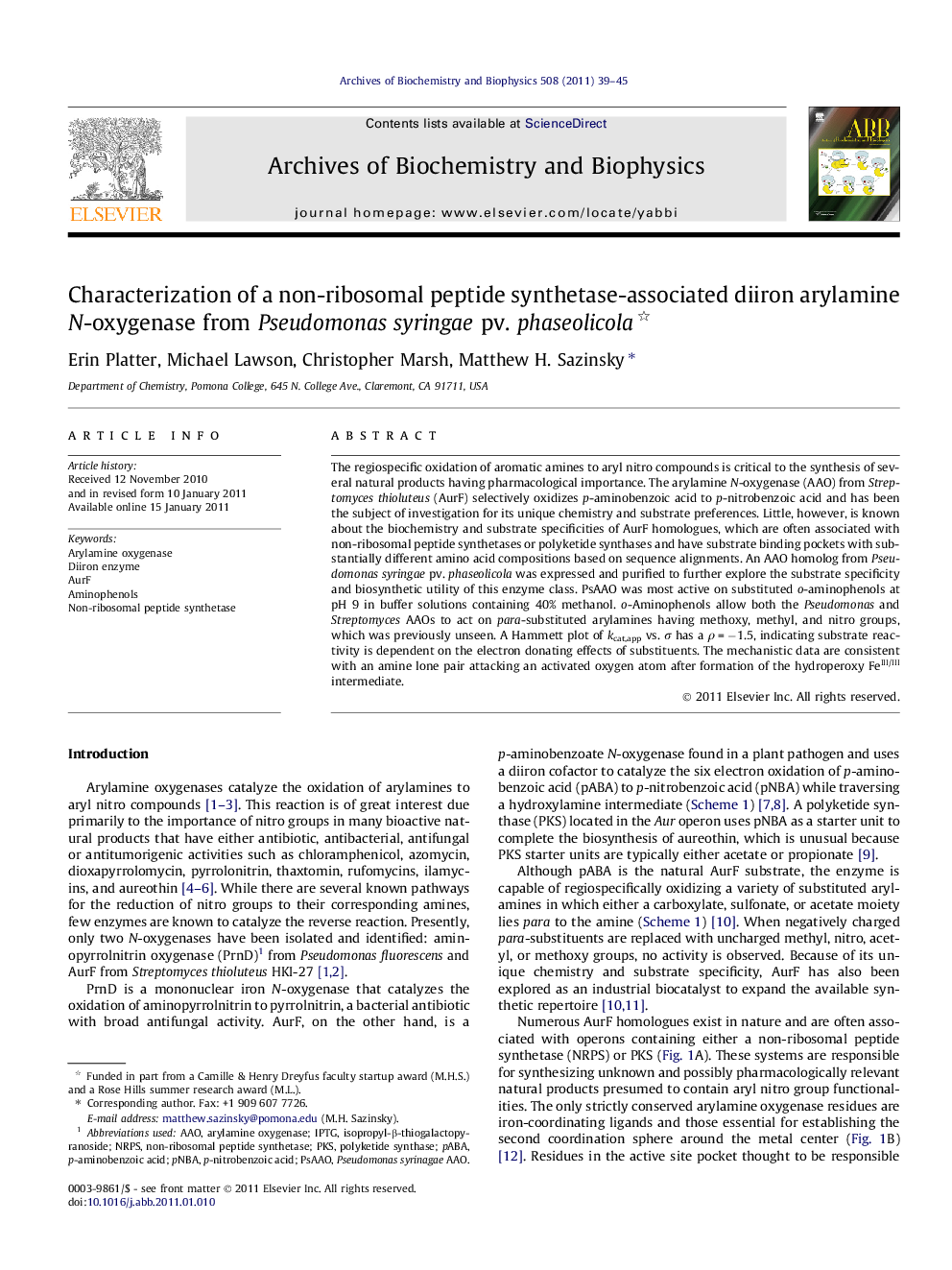| Article ID | Journal | Published Year | Pages | File Type |
|---|---|---|---|---|
| 1925831 | Archives of Biochemistry and Biophysics | 2011 | 7 Pages |
The regiospecific oxidation of aromatic amines to aryl nitro compounds is critical to the synthesis of several natural products having pharmacological importance. The arylamine N-oxygenase (AAO) from Streptomyces thioluteus (AurF) selectively oxidizes p-aminobenzoic acid to p-nitrobenzoic acid and has been the subject of investigation for its unique chemistry and substrate preferences. Little, however, is known about the biochemistry and substrate specificities of AurF homologues, which are often associated with non-ribosomal peptide synthetases or polyketide synthases and have substrate binding pockets with substantially different amino acid compositions based on sequence alignments. An AAO homolog from Pseudomonas syringae pv. phaseolicola was expressed and purified to further explore the substrate specificity and biosynthetic utility of this enzyme class. PsAAO was most active on substituted o-aminophenols at pH 9 in buffer solutions containing 40% methanol. o-Aminophenols allow both the Pseudomonas and Streptomyces AAOs to act on para-substituted arylamines having methoxy, methyl, and nitro groups, which was previously unseen. A Hammett plot of kcat,app vs. σ has a ρ = −1.5, indicating substrate reactivity is dependent on the electron donating effects of substituents. The mechanistic data are consistent with an amine lone pair attacking an activated oxygen atom after formation of the hydroperoxy FeIII/III intermediate.
Research highlights► A Pseudomonas syringae diiron arylamine oxygenase was characterized. ► PsAAO is most active toward substituted o-aminophenols at pH 9 in 40% methanol. ► Substrates with non-charged substituents para to the amine were reactive. ► Substrate activity is dependent on substituent electron donating effects.
